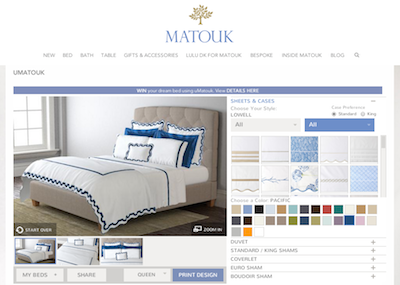Consumers pay 40 to 150pc more for custom items: Fluid director of strategy
NEW YORK – Customization is poised to expand to more categories as consumers desire something that is uniquely their own, according to the director of strategy at Fluid, Inc.
Presenting at Luxury FirstLook: Strategy 2016 on Jan. 20, Chris Haines talked about the trend of co-creation, where consumers want to become their own designer and have a say in the look of the items they buy. Even with the advent of technology designed to help customize, the human element is still key in bespoke and personalized designs.
Have it your way
Referencing research from Forrester, Mr. Haines explained that customization has an impact on consumers’ buying decisions, with 45 percent of shoppers having chosen, recommended or spent more money to have a product or experience that was personalized.

Le Pliage personalized from Longchamp
Personalization in digital marketing can sometimes work against a brand as it can prove how little a label knows the individual and occasionally come off as creepy.
On the other hand, personalization in the customer’s hands enables brands to offer them something different.
There are varied levels of customization that a brand can provide, starting with no customization on pre-existing products. Low on the scale are bundling features, which enable consumers to create an outfit or set out of individual products available.
Further up the scale are personalization features such as monogramming, followed by changing aspects of a product such as lining color. At the top of the scale is fully bespoke items, where the buyer begins from scratch with every detail down to fit.
Bundling can help facilitate the purchase process.
For instance, U.S. linen maker Matouk is helping consumers visualize their “perfect bed” with its first online configurator, developed in partnership with Fluid.
UMatouk allows both retailers and consumers to mix and match bedding to create their own combinations, which appear on a photorealistic 3D bed. Since it can be difficult to imagine how the range of possibilities would look once on an actual bed, the uMatouk tool helps to make the decision process easier, and make consumers more confident in their final choice (see story).
Mr. Haines believes that eventually, bundling will transcend brands, enabling consumers to mix and match different designers within the same platform to build outfits.
Some brands have used personalization as an engagement tactic before point of sale.
British fashion label Burberry brought holiday cheer to London’s Piccadilly Circus with an interactive 3D experience for pedestrians.
A digital billboard on the curved screen at Piccadilly will show computer generated images of Burberry’s heritage scarf, which consumers were able to personalize and interact with using their mobile phone (see story).
When offering an opportunity to alter a product extensively, one best practice is showcasing examples. For instance, when Fluid worked with Reebok on a custom shoe platform, Chad Ochocinco’s designs were used to demonstrate what could be done.
Consumers do not want to start with a completely blank slate, and they also do not want to be told how to customize. Brands should let them begin with any step in the process.

Pringle Deconstructed microsite
For luxury labels that keep tight control over their image, customization on the product level may need to be contained to elements that a brand can live with, such as interior details on a handbag.
A number of startups have launched that center on measuring for apparel using body scanning. Mr. Haines said that this technology is no replacement for a human tailor, who are trained to understand how to fit the form of a living breathing person in front of them.

